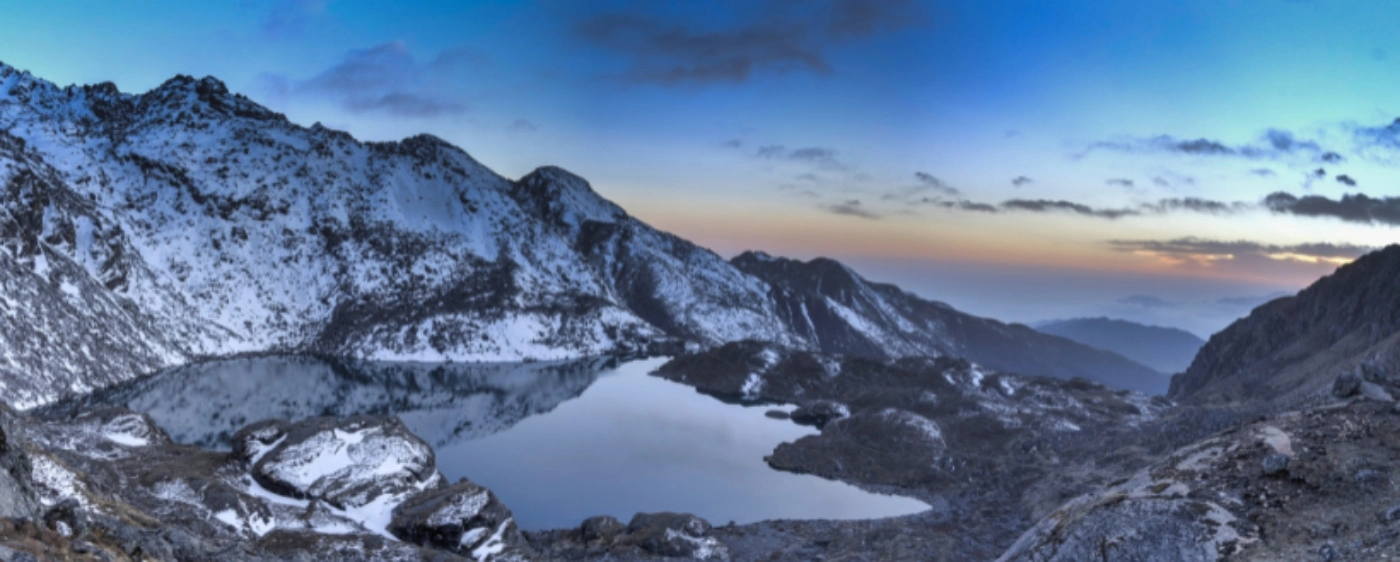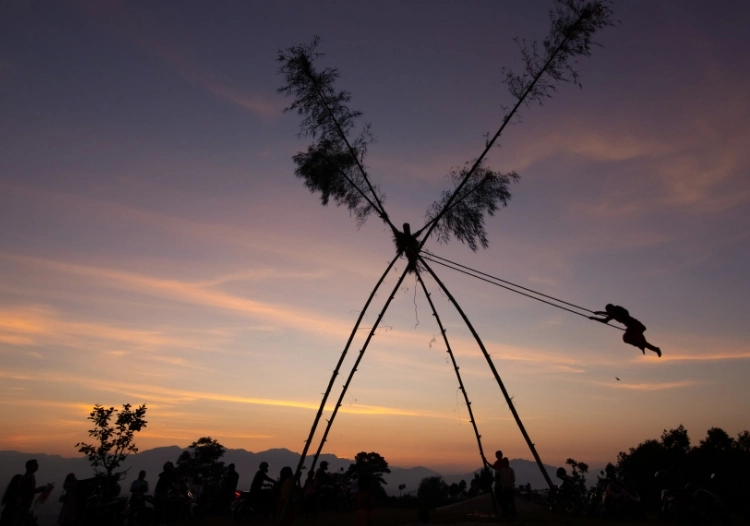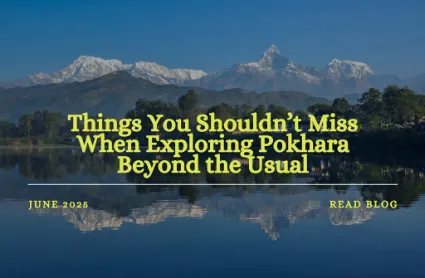Nepal vision | 20/10/2025
You have made your trek, your pack is packed, and the siren of the Himalayas is calling to you day by day. However, before you lace those boots on and run out after the mountain scenery, you might as well step back and realize that trekking in Nepal is not all about success and determination, but it is all about security. The landscape is erratic, the elevation may turn against you within minutes, and the health care in the off-road areas can be scarce.
This is why proper vaccinations, selection of a good travel insurance unit, and an intelligent medical kit are not optional anymore; they are a necessity.
Whether it is a travel clinic in Kathmandu or high altitude rescue aid, being able to know what is out there (and what is not) may save you a lot of trouble out in the trail. This is not fear-mongering at its intelligent trampling.
Now, as you prepare to begin your adventure, we should go over all that you need to be healthy, safe, and entirely prepared to enjoy the beauty, but with its challenging scenery.
Why Trekking Safety in Nepal Matters?
The trekking routes in Nepal are some of the most scenic in the world, although they carry their own set of risks, which should be taken care of. Altitude is one of the most difficult issues. Various recreational hikes such as Everest Base Camp, Annapurna Circuit and Manaslu have elevations of 3-000-5500 meters where the concentration of oxygen is greatly reduced.
Trekking requires appropriate acclimatization, otherwise, the trekkers may develop Acute Mountain Sickness (AMS) or more severe illnesses like High Altitude Pulmonary Edema (HAPE) and High Altitude Cerebral Edema (HACE).
The other factor is remoteness. In the high Himalayas, villages and teahouses can be several hours or days apart, and facilities of more than basic medical aid can be very scarce. Helicopter evacuation is costly and can only be used in emergencies, as it is conditional on weather conditions.
The weather in Nepal is very unpredictable. The clear mornings might soon be changed by the rain, snow or hurricane. The changes in temperature are drastic, and it may suffer hypothermia or frostbite when exposed to low temperatures, and it may also become sunburned and dehydrated when exposed to the sun in areas with elevated altitude.
Due to such difficulties, preparation and risk awareness are vital. Trekkers must book their schedules keeping the concept of acclimatization, carry the relevant equipment, learn the symptoms of altitude sickness, and ensure that they have a travel insurance cover that takes care of an emergency at high altitude. Concisely, it is not merely a precaution that safety planning is, but the pillar of a successful and delightful trek in Nepal.
Common Health Risks During Nepal Treks
Nepal trekking puts tourists at risk of a number of health risks. Preventing and being aware of the safety matters:
- Altitude sickness - May be mild acute mountain sickness (AMS) or severe (high altitude pulmonary edema (HAPE) or high altitude cerebral edema (HACE). The symptoms can be headaches, nausea, dizziness, shortness of breath, and confusion. It is imperative to have progressive acclimatization and observation.
- Dehydration, sunburn, and hypothermia – Extreme weather, cold nights and intense UV radiation in the high altitudes make hydration, layered clothing and sunscreen essential.
- Poisoned food and water -Diarrhea, stomach infections, and various gastrointestinal complications are usual. Eating cooked food and taking boiled or filtered water will be helpful.
Possible bodily injuries include uneven surface, slippery foot trails and steep ascents that elevate the possibility of slips, sprains, fractures, and blisters. Injuries can be reduced by proper trekking shoes, trekking poles, and pacing.
Recommended Vaccinations Before Trekking in Nepal
To go on the trails in Nepal, being informed about the vaccinations is one of the most important aspects of your health preparation. Vaccinations prevent widespread infectious diseases as well as risks specific to the area that can be experienced during trekking.
Routine Vaccinations
All tourists to Nepal are advised to carry:
- Tetanus- Guards against cuts and injuries caused by bacterial infections.
- Diphtheria- Prevents a severe respiratory illness.
- Hepatitis A and B - Protects against liver infections that are transmitted through contaminated water, food or blood.
- Typhoid - Widespread in regions where access to clean water and sanitation is not a priority.
Optional/Region-Specific Vaccinations
Other vaccines might be recommended depending on your trekking route and trekking time:
- Rabies -Vaccination is advised for people traveling in villages or those who work with animals.
- Japanese Encephalitis - Among the long-term trekkers who might be in the endemic areas, particularly during the monsoon season.
Timing and Consultation
Ideally, vaccinations are to be taken 46 weeks before departure in order to be fully immunized.
It is vital to visit a travel health clinic to tailor the vaccination recommendations depending on your journey, your health and any underlying medical conditions.

Travel Insurance for Nepal Treks
Nepal trekking is an adventure of its own with special risks which cannot be covered by regular travel insurance. Trekking insurance is necessary as it will insure you against possible emergencies like:
- Evacuation- Where there is altitude sickness, extreme injuries or emergency conditions in remote locations.
- Disease or injury - Inpatient or outpatient care, medication, and treatment.
- Misplaced/ mislaid luggage- Essential for trekkers who have been using certain equipment and clothes.
- Trip cancellation/interruption- Due to unforeseen circumstances such as natural calamities, strikes, and sickness.
In the absence of appropriate coverage, the fees associated with helicopter evacuation or emergency medical care may easily run up, and both your trek and bank account will be at stake.
What to Look for in a Trekking Insurance Plan?
The insurance to choose in the case of a Nepal trek should cover:
- Altitude coverage- The policy must cover the treks that are at an altitude of above 4,000m-5,000m, as the occurrence of altitude sickness and complications is prevalent.
- Helicopter evacuation in case of emergency- Emergency evacuation of remote and high-altitude communities where an emergency cannot be reached by ground.
- Medical treatment and hospital stay coverage- The comprehensive coverage makes the treatment affordable without any financial burden.
Widely known and trusted by trekkers are World Nomads, SafetyWing and other trekking insurance providers. These firms are familiar with the special dangers of Himalayan adventuring, and they provide schemes that can serve the mountainous excursions.
Medical Aid and Emergency Support on the Trail
While Nepal’s trekking trails often pass through remote areas, trekkers are not completely alone when it comes to medical support. Along popular routes such as the Annapurna Circuit, Everest Base Camp, and the Manaslu Circuit, there are health posts, pharmacies, and local clinics capable of handling minor ailments and providing first aid. However, serious injuries or illnesses may require evacuation to larger medical facilities. In these situations, trekking guides and porters play a vital role, often trained in basic first aid to stabilize injuries, provide immediate care, and coordinate emergency response.
A well-prepared personal medical kit is essential for all trekkers. Items such as painkillers, Diamox for altitude sickness, oral rehydration salts, antiseptics, bandages, and blister pads should always be carried, along with any personal medications. In severe emergencies, such as high-altitude illness or fractures, helicopter evacuation may be necessary. Trekkers should know how to contact their guides, local rescue services, and their insurance providers to ensure timely assistance.
Preventive Health Tips for Trekkers
Staying healthy on the trail is often easier than treating illnesses later. Key preventive measures include:
- Stay hydrated and drink plenty of water. Use filters or boiled water to reduce the risk of waterborne diseases.
- Acclimatize properly — ascend gradually and include rest days to allow your body to adjust to high altitudes.
- Maintain hygiene — use hand sanitizer and wash hands frequently to prevent infections.
- Eat safely — stick to cooked meals and avoid raw foods to minimize gastrointestinal issues.
- Listen to your body — rest if you feel unwell, and do not push through fatigue or symptoms of illness.
To wrap up, Trekking in Nepal is an unforgettable adventure, but the mountains demand respect and careful preparation. Prioritizing safety, health, and proper planning ensures that every step of your journey is fulfilling, enjoyable, and memorable. From vaccinations and travel insurance to understanding altitude risks and carrying a personal medical kit, being proactive allows you to focus on the incredible scenery and cultural experiences without unnecessary worry. Remember, a well-prepared trek is a rewarding trek. Take your time, listen to your body, and make informed choices.
Ready to plan your safe and unforgettable Himalayan adventure? Explore tailored itineraries, expert guidance, and fully supported treks with Nepal Vision Treks and make your dream trek both thrilling and worry-free.









